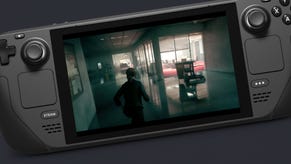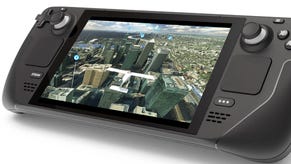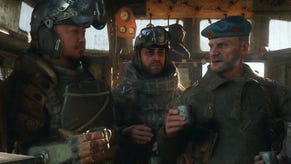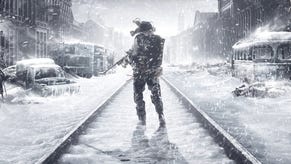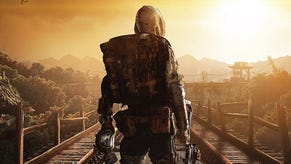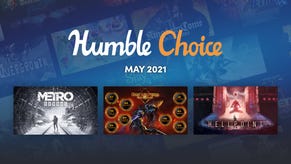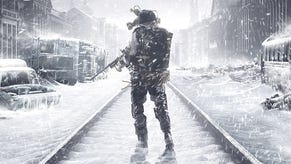Metro Exodus DLC takes its ray tracing to the next level
The Two Colonels tech adds extra realism to the traditional Metro aesthetic.
Metro Exodus: The Two Colonels is the first piece of DLC released by 4A Games and for PC users at least, an already state-of-the-art, forward-looking rendering implementation is pushed on to the next level - one of the best ray tracing implementations seen so far has a remarkable new feature. 4A's recently released expansion trades the wide sandbox levels of the original campaign for a more traditional Metro adventure, full of cramped corridors, tense scripted sequences and that bittersweet tone the game is known for. This return to a more familiar Metro experience sets the scene for 4A's latest transformative graphics update - the addition of emissive lighting ray-traced lighting.
It's exciting stuff, and the comparison gallery below demonstrates just how much more effective the new lighting is - but before we delve into specifics, let's briefly recap how RT works in the base game. Metro Exodus implements ray tracing through global illumination, where light emanates from the sun and the sky, bouncing once to light the game world more naturally than traditional rasterised techniques. This makes a huge difference to outdoor areas, as simulating rather than emulating creates new shadows, lights and colours that don't appear when ray tracing is turned off. However, indoor scenes - where the global illumination of the sun and sky aren't simulated - only see the benefit of screen-space ambient occlusion (SSAO) replaced by ray traced ambient occlusion. This is a nice change to make, but it's a more of a subtle tweak to the already extremely dark tunnels of the metro compared to the radical transformation RT brings elsewhere.
In The Two Colonels, indoor scenes finally get their killer RT feature with ray-traced emissive lighting. Put simply, emissives are simply textures that are tagged as being of one or more colours which maintain that colour regardless of lighting conditions. For example, you might see these in sci-fi games for objects that glow. These textures are normally paired with point or spot lights placed inside or nearby, so that the emissive texture looks like it is lighting nearby objects. However, these two systems are disconnected in the game world, so the illusion can be broken by the emissive texture changing colour, growing in size or disappearing altogether when that change is not reflected in the paired point light. Metro Exodus solves this by using ray tracing for its emissive surfaces, so that light emanating from such a surface always matches the surface's shape and colour - no longer an illusion, this is now a physically-grounded simulation.
Ray-traced emissives also scale better, allowing significantly more light-emitting objects to be visible in a scene without the typical compromises. Traditional games need to strictly control the number of point lights used for performance reasons, so a string of 20 lights might be approximated as five point lights, lighting could be permanently baked into textures or emissive lighting could be faked with a post-process bloom. All of these offer a good trade-off between fidelity and performance, but look closer and the illusion breaks down. In Metro Exodus with RT enabled, by contrast, each individual light bulb can be its own emissive surface with a distinct shape and colour, producing a dramatic effect not visible in non-RT versions of the same scene. The effect is more noticeable when using the flamethrower, as the spout of flame you produce lights up the entire room around it, eventually dimming to a glowing ember.
Using ray-traced emissives in this way has a number of obvious and not-so-obvious advantages. The biggest is that now any emissive surface can emit light, so there can be area lights of almost any shape across the environment rather than simple point lights which often don't match the shape of the light they're emulating. Consider a fluorescent tube - light ought to come from the length of the tube, but in games you'd expect to see a single point light which produces a misaligned result. Fire works the same way - no matter how complex the shape and colour of a flaming surface, the paired point light is simple and static, and may not even cast shadows. Ray-traced emissives change that, allowing for a more natural interaction between different lighting elements in a scene.

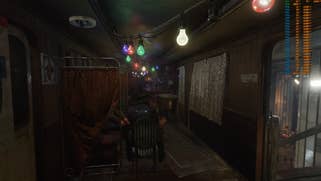


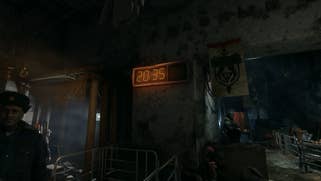
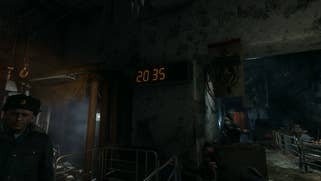
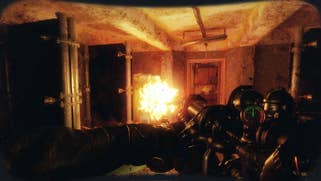
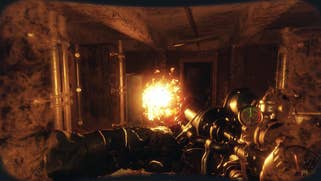


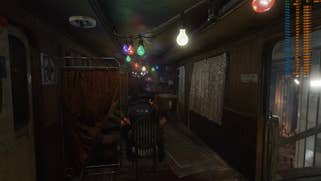

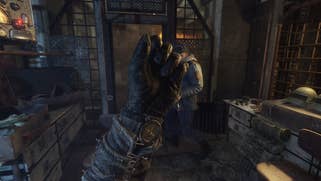
As well as affecting the lighting, using ray-traced emissive textures produces realistic shadows which form wherever the light does not reach. This can affect the look of people and objects, grounding them in the world with directionality and tone, as well as creating entirely new areas of light and shadow by taking into account smaller or temporary light-emitting textures like campfires and flamethrower streams.
Of course, all of this extra realism does come at a cost - and in general, expect a similar performance penalty for enabling RT in the indoor areas of The Two Colonels as we saw for enabling it in the outdoor areas of the base game. On an RTX 2080 Ti at 4K DLSS, turning ray tracing from off to high results in a performance drop of 26 per cent. If you instead go from RT off to RT ultra, frame-rates are reduced by 36 per cent. This is a little less than the hit from enabling global illumination in the outdoor areas of the game, but still significant enough to be worth mentioning. While the high and ultra RT presets in the base game resulted in only small visual differences, opting for ultra over high makes for more stable results with fewer visual artefacts in The Two Colonels.
Regardless of the setting though, ray tracing in The Two Colonels produces transformative effects that are well worth seeing - and it's exciting to consider similar ray-traced emissives in console games of the future. In the here and now though, it's very difficult to predict just how much RT processing power will be baked into the PlayStation 5 and Project Scarlett hardware, so it will be interesting to see whether the kind of results we're seeing in PC titles today will be explored in the consoles of tomorrow. Regardless, titles like Metro Exodus are demonstrating how transformative RT can be - and in The Two Colonels, one of the less fleshed-out elements of 4A's ray tracing support has been radically improved - and it'll be fascinating to see where the developer goes next.



